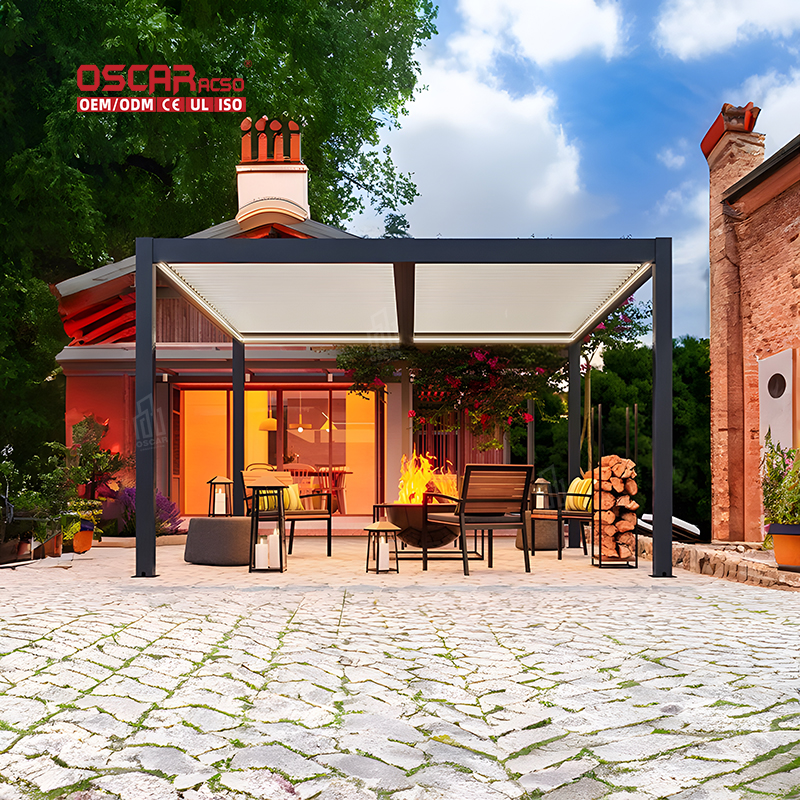Pergola Invention Era, Unveiling Its Ancient Roots and Evolutionary Journey
✨ The pergola, a beloved garden structure today, has a history that stretches back over three millennia. Its inventi...

✨ The pergola, a beloved garden structure today, has a history that stretches back over three millennia. Its invention isn’t tied to a single date but to a gradual evolution driven by the need for shade, beauty, and a connection between indoor and outdoor living. Let’s unravel this fascinating timeline.
🌍 What Exactly is a Pergola?
Before diving into history, let’s clarify what we’re talking about. A pergola is an outdoor structure consisting of columns that support a roofing grid of beams and rafters. This design provides partial shade and is often used to support climbing plants like vines, creating a natural, green canopy. It’s distinct from a gazebo or an arbor due to its open roof and larger size.
🏛️ Earliest Origins: Ancient Egypt & Rome
The pergola’s story begins in ancient civilizations, with some of the earliest evidence pointing to Ancient Egypt around 1400 BC.
- •
Egyptian Beginnings: High court officials in Egypt used early pergolas made from sandstone and wood to create shaded garden retreats. These structures provided crucial relief from the scorching sun and became spaces for social gatherings, symbolizing status and wealth.
- •
Roman Refinement: The Romans, inspired by Greek architecture, advanced pergola design. They incorporated wrought iron for added strength and durability, allowing the structures to support heavier fruit trees and elaborate hanging gardens. Roman aristocrats often adorned their pergolas with grape vines, using them for outdoor dining and leisure, blending functionality with luxury.
🎨 Evolution Through the Ages
The pergola’s design and purpose have continuously evolved, adapting to the tastes and needs of each era.
- •
Renaissance Revival: During the Italian Renaissance, pergolas experienced a resurgence as central features in formal gardens. They were constructed from brick, stone, or wood and adorned with climbing plants, creating elegant, shaded walkways. A renowned example is the pergola at Trinita dei Monti in Rome.
- •
19th Century Naturalism: The 19th century saw a shift towards naturalistic gardening. Pergolas became popular for supporting flowering plants like roses, jasmine, and wisteria, enhancing the romantic and aesthetic appeal of gardens.
- •
Modern Adaptations: Today, pergolas are versatile structures. Modern materials like wrought iron and durable woods are common, and designs range from classic to contemporary. They serve as extensions of living spaces, often equipped with retractable canopies, lighting, and drapes for added functionality and privacy.
🍇 Functional Beauty: Beyond Shade
The pergola’s invention was motivated by more than just the desire for shade; it has always been a multifunctional structure.
- •
Support for Cultivation: Pergolas have long been used in winemaking and fruit cultivation. Their open framework is ideal for supporting grapevines, making them a practical feature in vineyards. They were also used for growing figs and other overhanging berries.
- •
Architectural Integration: From ancient times to modern landscapes, pergolas have been used to define outdoor spaces, create visual interest, and enhance the connection between architecture and nature. They guide movement through gardens and provide a framework for plants to thrive.
.jpg)
💡 Why Did the Pergola Stand the Test of Time?
The pergola’s enduring popularity can be attributed to its unique blend of form and function. It offers a perfect balance of shade and sunlight, structure and openness. Its ability to support plant life integrates it seamlessly into natural surroundings, while its architectural form adds human creativity to the landscape. This versatility allows it to adapt to countless styles and purposes, from a productive grape arbor to a serene outdoor lounge area.
.jpg)
🌟 The Pergola’s Journey: A Timeline of Key Moments
- •
c. 1400 BC: Early pergola-like structures appear in Ancient Egyptian gardens.
.jpg)
- •
Roman Era: Romans enhance design with wrought iron and use pergolas for luxury and fruit support.

- •
Renaissance Period: Pergolas become iconic features in Italian formal gardens.
- •
19th Century: Pergolas gain popularity in naturalistic garden designs for flowering vines.
- •
20th-21st Century: Modern materials and designs transform pergolas into multifunctional outdoor living spaces.
The pergola’s invention wasn’t a single event but a continuous process of adaptation. From its ancient roots providing shade to Egyptian nobles, to its role in Roman vineyards, and its current status as a centerpiece of modern outdoor design, the pergola has always reflected our desire to blend architecture with nature. Its timeless appeal lies in its simple yet powerful ability to create a defined, beautiful space under the open sky.

